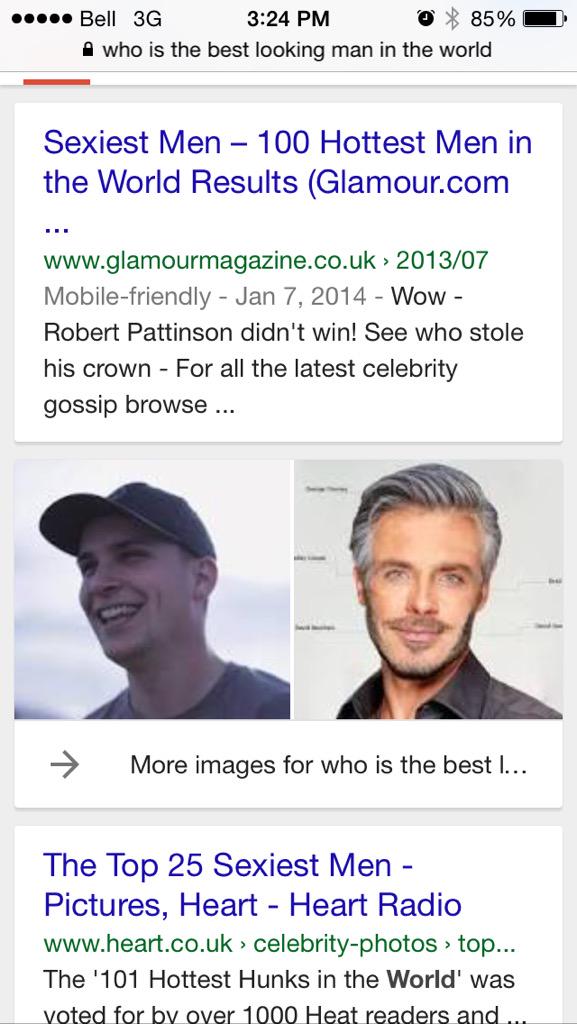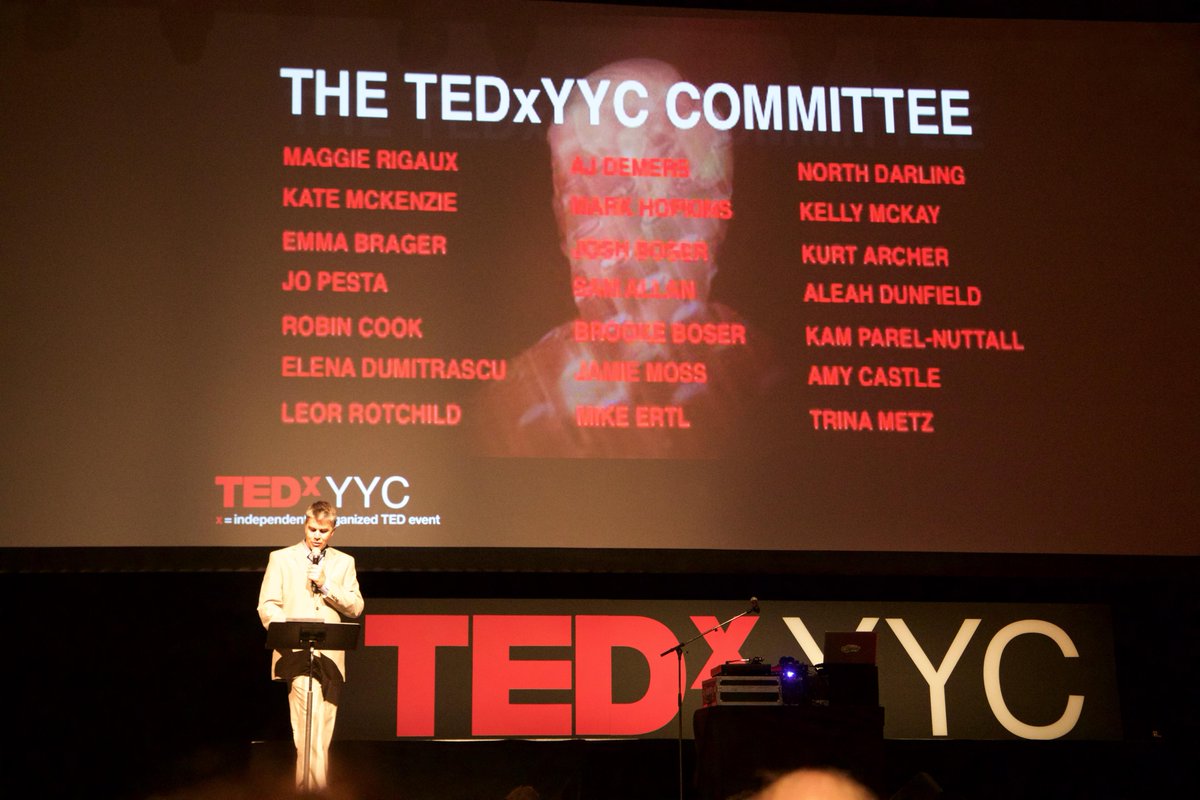TEDxYYC kicked off it’s 6th year at the Jack Singer Concert Hall this past Saturday to beautiful crowds and excited weather. Among the buzzing crowd were me and Ailin, marveling over the transformation of the concert hall into a modern and scholarly place. Guest speakers of the day included Emmy-Award winning filmmaker Ric Esther Beinstock, MIT doctoral candidate Steven Keating, and international dancer and motivational speaker Bobby Mileage. The event was once again hosted by the humorous and professional David Gray, who explained this years’ theme of “crafted”, as all speakers are talking about their own crafted experiences and ideas. For me and Ailin, our first TEDxYYC event was definitely memorable and enjoyable, see our adventures in her vlog. Read on to hear about the inspiring speakers and what ideas they had to share on the so-called “spay day for the mind.”

RIC ESTHER BIENSTOCK: Emmy-Award winning Canadian filmmaker
Out of the many amazing speakers that day, Ric was definitely one of my favourites. Her presentation was professional, funny, and conveyed her idea that finding similarities in completely different situations is crucial in order to understand people as they are and to tell an authentic story. She told stories of her travels. One of the stories she told took place in Zaire (now the Democratic Republic of Congo), where she was interrogated by an airport worker in hopes of earning meager wages. Through dinner, she learnt that the government was not paying its public servants, and that that was the only way to make a living. She also recalled discussing camera techniques with the entrepreneur and pornographic film producer and actor known as “Buttman”. Through her stories, she made clear that even in the most contrasting of situations, the best way to understand it as it truly is is to discover what universal similarities lie within.
KATERI COWLEY: Horse trainer and former Calgary Stampede Princess
Kateri is definitely a local idol for all cowgirls. She was the first and only woman to ever win the Cowboy Up Challenge at Aggie days, as well as the third women to be ever invited to the Red Deer Mane Even Trainers Challenge. Growing up, Kateri pursued her passion for horseback riding and training, and went to on achieve her lifelong goal of being a Stampede Princess in 2008. However, she also faced many personal tragedies in that same period, causing her to hide away her emotions in an attempt to reclaim her public life. While everyone else believed everything was fine, her horse was able to see through her facade and stopped responding to her signals. This last straw made Kateri realize that even though she had guided her horse, her horse was now guiding her. Through this personal awakening, she found that in order to guide others, you must learn to guide yourself first.

CHRISTINE GIBSON: Doctor and Founder of Global Familymed Foundation
Calgarian doctor Christine Gibson recalled a story of her experience in Nepal during the devastating earthquake in April. However, despite being a trained doctor, she found herself unable to help in the dire situation in spite of the many around her that needed surgical medical attention. She saw many others try to help though. The efforts of international aid groups provided soap and toothbrushes to victims of the earthquake. Little did they know that they people they had been trying to help hadn’t seen water in days. This made Christine realize that communication between doctors and patients is incredibly important in ensuring that the patient receives the best care. She revealed that on average, doctors cut off their patients 18 seconds into their first interaction and 30% of prescriptions go unused because patients don’t believe that they address their real problem. Through telling a gripping story about her personal experiences, Christine was able to bring to light an important issue that is prevalent in the medical community.
STEVEN KEATING: 3D printing pioneer and curiosity advocate
MIT doctoral candidate Steven Keating definitely stole the show on Friday. His speech was witty, interesting, engaging, and emotional. Steven’s advocacy of curiosity started at an early age, and ended up saving his life later on when he participated in an academic brain scan out of curiosity to which he was given access to the final results. He was assured that there was nothing unusual about his brain scan by several doctors, but his personal interest regarding a strange lighter-coloured area of his brain as shown in the scan perplexed him. Later, he would find out that it was a cancerous tumour which took up 10% of his brain and required an awake 10-hour surgery to remove. In the end, his medical “cell”-fie saved his life. This made Steven wonder why medical data is not made available to the patient that it concerns. At this point in the presentation, the entire concert hall erupted in quiet conversations along the lines of “why didn’t I ask about that before!” and “why shouldn’t I be allowed to view my own medical records?” Steven’s idea certainly made me consider the importance of open patient data and made me wish to see my own personal medical history, much of which I am unclear about.

JOEL KLETTKE: Author, blogger, and digital content expert
Having worked as a digital marketer for most of his early 20’s, Joel knows all about manipulating Google to serve your needs. Most of us don’t question our dependence on Google, even give it the full trust to give us (false) medical diagnoses. By performing a simple Google search for “the best looking man in the world”, you’ll find a picture of Joel as the first result that pops up, an example that shows just how easily Google can be manipulated to serve the interests of advertisers. Joel’s talk was filled with humour and funny visuals that further reinforced his point; it’s easy to manipulate the internet so carefully consider the information you find on the internet (but don’t shy away).

LARS KRUTAK: Tattoo anthropologist
How often is it that you meet a tattoo anthropologist? Lars’ line of work has brought him to many indigenous tribes in Asia, the Americas, and all over the rest of the world. Through his speech, he pointed out that just as your own tattoo possesses great meaning to your values and attitudes, the traditional cultural tattoos of people all over the world serves that purpose as well. In fact, it is what mainstream tattoos have been derived from. Unfortunately though, the art of cultural tattoos is becoming rare. Many people advocate for the preservation of language, traditions, and other forms of cultural preservation, but as Lars commented, little to no one pays attention to the tremendous value and identity traditional tattoos play in the role of culture. Lars’ talk made me realize that culture comes in many shapes and forms, and all are valuable to the personal and collective identities of a society, indigenous or not.

RACHAEL L’ORSA: Telesurgical rootics expert and smokejumper
Many schools are now making their way into transitioning to become more progressive in their learning strategies. Student-directed schools such as Bishop Carroll and Robert Thirsk have been drawing the attention of educators and students alike, but is that really enough to give students the opportunity to diversify their learning? Due to her work with students during her time directing a robotics program, Rachael found that the mathematics and science courses taught at schools don’t adequately prepare students for the real world. She feels that the knowledge gained about those subjects at school cannot be readily applied to real-life situations, but it is the real life that students will have to face once they graduate and seek employment. Rachael says that for her students, the main problem with subjects such as math and science fall under a continuum of “too easy” to “too hard”, which just shows how learning has been compartmentalized to the point where students do not enjoy what they are learning anymore. By adopting adaptive learning strategies, students will be better prepared to apply their knowledge in the future.

BOBBY MILEAGE: Dance Inspiration, entrepreneur
Having faced a tough childhood in the slums of Boston filled with drugs, alcohol, and abuse, Bobby Mileage swore off of those things and dedicated his early life to training for football with the hopes of joining the NFL, knowing that it was a way out of his “personal hell”. During that time, he also picked up dance, something that he used to relax and escape his predicament. Although he was crushed by not making it into the NFL after trying out, Bobby graduated with a business degree and pursued a regular 9-5 office job. Shortly after, he was contact to dance in Will Smith’s Men in Black music video and toured with Mariah Carey. Needless to say, he quit his office job. Since then, Bobby has launched his own clothing line, all whilst dancing and providing inspiration for those who have faced childhood adversity and hardships. Through his interactive presentation (there was a bathtub and live dance performance), he inspired everyone to “make your own slice of heaven in hell”.

CHLOE RUTZERVELD: Food designer
If you google search “3-d printed food”, Dutch food designer Chole Rutzerveld’s creations will appear on the first page. In a world where 3-D printing has just begun to become accessible, food printing has mostly been focused on unhealthy foods such as pizzas and chocolate desserts. Chloe, however, wants to change the way we use the lucrative technology. She has invented a natural, healthy, and living h’or d’oeuvres which are printed then given to the consumer, who can choose when to harvest the product (the flavours get stronger as time goes on, much like cheese or wine). Though she admits that she has in fact never operated a 3-D printer, Chole still encourages the use of the new technology for positive purposes such as providing a solution for world hunger and famine.
BLAKE SPENCE: Wiseguyz co-founder
In his Ted Talk, Blake Spence recalled the tragedy that made him the person he is today. As a child, Blake knew that he was gay but hid his interests in more “effeminate” subjects to avoid ridicule from classmates. There was another boy in his class that embraced his interests in those subjects however, though not without the constant taunting from peers. When that individual committed suicide, Blake knew that he would not be able to bear another event like this and knew that the social construct of masculinity needed to be redefined. Many years later, he co-founded Wiseguyz, a program of the Calgary Sexual Health Centre that seeks to educate adolescent boys about topics ranging from sexual health, social issues, and the concept of masculinity. Through the after school program, Blake and his colleagues hope to create a safe environment for boys to share their questions and thoughts about the issues that prey on their minds, as well as forge human and honest connections through vulnerability.
Though I did write about all the speakers at the event, artists such as the hip-hop duo Dragon Fli Empire, Alberta Ballet dancer Yukichi Hattori, and one-man orchestra Hello Moth all gave amazing performances at the event as well. Major thanks to TEDxYYC for sending me and Ailin to this amazing event, there is no doubt that I would go again next year! It may be quite a shock that all who organized this huge event were volunteers. A round of applause goes out to all of them:

Disclaimer: Though Ailin and I were given tickets by TEDxYYC, all opinions expressed are personal and non-sponsored!




